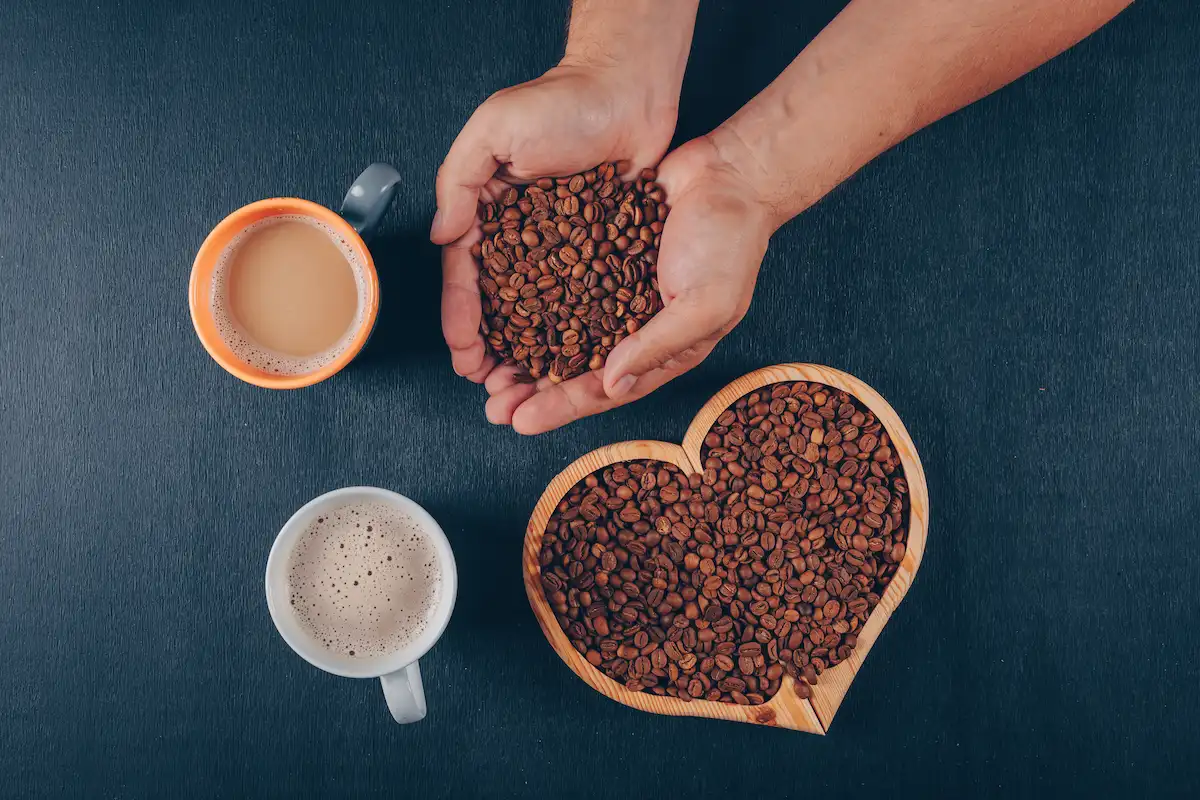It’s 6 a.m., and you cradle your coffee, watching the sunlight filter through the trees. That familiar cup isn’t just part of your morning—it’s part of a story that has stirred empires, markets, and revolutions. Coffee became the drink of choice after the Boston Tea Party, helped inspire the birth of the London Stock Exchange, and fueled centuries of debate in coffeehouses where new ideas took root.
From the bustling qahveh khaneh of Istanbul to Europe’s “penny universities,” coffee has always been more than a beverage; it’s been a spark for connection, rebellion, and change. Today, your morning ritual carries centuries of history in every sip.
The Birth of the Coffee Revolution
Coffee first appeared in the Middle East, where Sufi monks in Yemen brewed it to stay awake during long nights of prayer. By the mid-1500s, the first coffeehouses, or qahveh khaneh, had sprung up in cities like Mecca and Istanbul, both under Ottoman rule. By 1600, Istanbul alone boasted around 600 coffeehouses, vibrant spaces where men gathered to exchange news, debate politics, play chess, and enjoy music.
These gatherings grew so influential that Ottoman rulers began to see them as potential breeding grounds for rebellion. Coffeehouses were cheap and open to all, creating rare spaces where merchants, scholars, and commoners mingled freely.
Sultan Murad IV even banned coffee in 1633, punishing violators with death, fearing that the ideas and alliances forged over steaming cups could topple the empire’s order. Despite such crackdowns, coffeehouses endured, laying the groundwork for coffee as a revolutionary force.
Coffeehouses in Europe: Penny Universities

By the 16th and 17th centuries, coffee had reached Europe through Ottoman trade routes. In England, coffeehouses flourished as hubs for conversation, commerce, and culture. Nicknamed “penny universities,” they charged a penny for entry, granting access not only to a drink but also to debate, news, and knowledge.
Many coffeehouses developed their own identities: some focused on politics, others on literature or trade. Out of this culture came new institutions: Jonathan’s Coffee House became the London Stock Exchange, Lloyd’s Coffee House evolved into Lloyd’s of London, and coffeehouse auctions later inspired Sotheby’s and Christie’s.
By 1739, London had more than 550 coffeehouses. They shaped public opinion, fueled economic innovation, and encouraged interaction across social classes, laying the foundations for modern ideas of equality and democracy.
Brewing Revolutions Across Continents

The coffee revolution was truly global. In the Americas, when colonists protested British tea taxes during the Boston Tea Party of 1773, coffee quickly became the patriotic choice, replacing tea as the beverage of revolutionaries.
In Asia, coffee’s story took a different turn. During the mid-19th century, French missionaries and colonial administrators introduced coffee to Vietnam, then part of French Indochina. They planted arabica trees, prized for their smoother, less bitter flavor compared to robusta. Over time, this laid the groundwork for Vietnam’s distinctive cà phê phin (filter coffee) culture, where strong brews slowly drip through metal filters and are often mixed with sweetened condensed milk, a practice born from limited access to fresh dairy under colonial rule.
Meanwhile, in 1723, French naval officer Gabriel de Clieu famously transported a coffee seedling from Paris to Martinique, braving storms, pirate attacks, and water shortages. The seedling survived and flourished, eventually spreading across the Caribbean and Latin America. This single act helped establish the vast coffee economies of Brazil, Jamaica, and beyond, shaping regional trade and labor systems for centuries.
Coffee as a Global Commodity

By the 19th century, Brazil had become the world’s leading coffee exporter, with cultivation spreading from the Paraíba Valley to São Paulo and relying heavily on enslaved African labor until abolition in 1888. Coffee dominated Brazil’s economy, accounting for over 40% of exports by the 1840s, and the rise of powerful “coffee barons” fueled both industrial growth and political pressure to shift toward immigrant labor.
But coffee’s influence went beyond economics. Its trade reshaped global shipping routes as beans flowed from Caribbean ports like St. Domingue and South American hubs in Brazil to Europe, fueling maritime commerce across the Atlantic. European powers such as France, Portugal, and the Netherlands expanded colonies to secure fertile land for coffee, embedding the crop within systems of slavery and forced labor that profoundly shaped local societies and migration patterns.
The bean had become more than an agricultural product: it was a global engine of commerce, linking farmers, merchants, empires, and consumers. Each cup was connected to a vast web of labor, power, and geopolitics that shaped entire societies.
From Instant Coffee to Third Wave: The 20th-Century Transformation

The 20th century turned coffee into a daily ritual. During World War II, instant coffee became a soldier’s lifeline, quick, energizing, and easy to prepare. Nearly 10 percent of U.S. coffee imports went directly to the military, and returning soldiers brought the habit home, embedding coffee into everyday American life
In civilian life, new rituals emerged. The “bottomless cup,” a mug endlessly refilled in diners and soda fountains, encouraged lingering conversations and reflected a culture of generosity, making coffee a communal experience.
By the 1960s, consumers began rejecting bland, mass-produced instant blends. Specialty roasters like Peet’s Coffee emphasized darker roasts, bean origins, and flavor profiles, highlighting that coffee could be about taste, craft, and experience rather than mere caffeine.
Starbucks expanded globally from a single Seattle store in 1971 to over 32,000 locations. The chain turned cafés into spaces for experimentation, social connection, and appreciation of diverse beans. From Ethiopian Sidama, with its floral and citrus notes, to Brazilian and Colombian blends like Sunsera, each cup became a celebration of culture, craft, and identity.
Coffee Today: Flavors, Trends, and Generational Tastes

Coffee has evolved far beyond the traditional espresso or drip brew. Today, it reflects the tastes and values of each generation:
- Baby Boomers (1946–1964): Loyal to classic espresso-based drinks, they value consistency, comfort, and familiar brands. Coffee is both a ritual and a social connector, whether at home or in cafés.
- Generation X (1965–1980): A transitional generation, embracing both traditional coffees and trendy drinks like iced lattes or frappuccinos. Many seek artisan roasts, single-origin beans, and café experiences enhanced by social media discovery.
- Millennials (1981–1996): Adventurous coffee lovers, drawn to specialty drinks, pour-overs, nitro cold brews, and unique blends. Atmosphere, barista craft, and Instagram-worthy presentation matter. Sustainability is key, with many opting for fair-trade or organic beans.
- Gen Z (1996+): Innovators and ethics-driven consumers, favoring cold brews, oat milk lattes, and matcha-infused drinks. Social media fuels trends like Dalgona coffee, while sustainable and local cafés are top choices. Personalization, wellness, and social responsibility define their coffee culture.
Across generations, coffee remains more than a drink; it’s a cultural statement, a daily ritual, and a spark for connection, creativity, and change.
Why the Coffee Revolution Still Shapes Coffee Culture

Today, coffeehouses and coffee culture remain spaces of connection, creativity, and community, a modern echo of the centuries-old coffee revolution. Every cup carries the spirit of debate, innovation, and cultural exchange, showing how coffee has influenced societies across continents.
From bustling cafés to home-brewed creations, the legacy of the coffee revolution lives on. Coffee still sparks conversation, inspires ideas, and brings people together, proving that this humble bean continues to drive change.
When you sip your coffee, you’re not just fueling your day; you’re part of a centuries-old revolution that still shapes how we connect, create, and change the world.
FAQs About Coffee Revolution
What’s the difference between Arabica and Robusta coffee?
Arabica beans are smoother and sweeter, while robusta beans are stronger, more bitter, and contain almost double the caffeine.
Why does coffee sometimes taste bitter?
Bitterness usually comes from over-roasting, over-extraction during brewing, or using lower-quality robusta beans.
Is decaf really caffeine-free?
No. Decaffeinated coffee isn’t completely caffeine-free. About 97% of the caffeine is removed during processing, leaving roughly 2 milligrams per cup compared to 95+ milligrams in regular coffee.
Why does coffee smell different from how it tastes?
Coffee’s aroma comes from over 800 volatile compounds, many of which change or disappear once brewed, making scent and taste distinct.
Why do some cultures serve coffee with spices?
In places like the Middle East, spices such as cardamom or cinnamon are added to enhance flavor and symbolize hospitality.





0 Comments